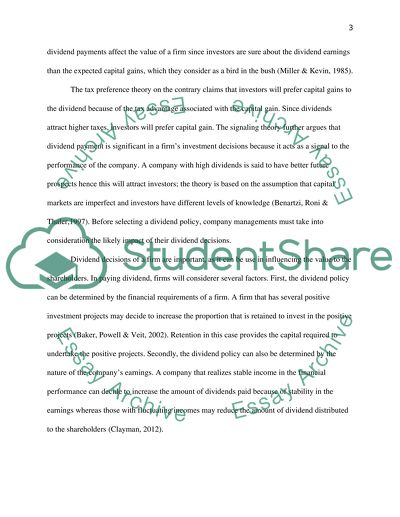Cite this document
(“DIVIDEND POLICY Essay Example | Topics and Well Written Essays - 750 words”, n.d.)
DIVIDEND POLICY Essay Example | Topics and Well Written Essays - 750 words. Retrieved from https://studentshare.org/finance-accounting/1447198-a-companyyies-decision-to-pay-a-dividend-is
DIVIDEND POLICY Essay Example | Topics and Well Written Essays - 750 words. Retrieved from https://studentshare.org/finance-accounting/1447198-a-companyyies-decision-to-pay-a-dividend-is
(DIVIDEND POLICY Essay Example | Topics and Well Written Essays - 750 Words)
DIVIDEND POLICY Essay Example | Topics and Well Written Essays - 750 Words. https://studentshare.org/finance-accounting/1447198-a-companyyies-decision-to-pay-a-dividend-is.
DIVIDEND POLICY Essay Example | Topics and Well Written Essays - 750 Words. https://studentshare.org/finance-accounting/1447198-a-companyyies-decision-to-pay-a-dividend-is.
“DIVIDEND POLICY Essay Example | Topics and Well Written Essays - 750 Words”, n.d. https://studentshare.org/finance-accounting/1447198-a-companyyies-decision-to-pay-a-dividend-is.


